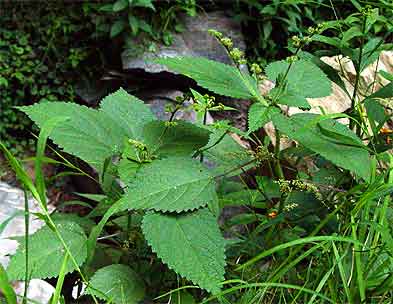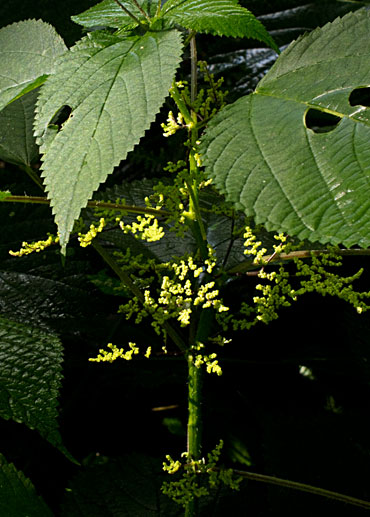 Stinging Nettle
Stinging Nettle
Urtica dioica
Among 626 hypertensive/diabetic patients, in Morocco, 2/3 use herbal medicine. Urtica dioica is among the most used by hypertension patients
Young leaves are reported by many to make a delicious and healthy tea.
From King's American Dispensatory
Botanical Source.—This plant is a perennial, herbaceous, dull-green plant, armed with minute rigid hairs or prickles, which transmit a venomous fluid when pressed. The stem is obtusely 4-angled, branching, 2 to 4 feet high, arising from a creeping and branching root, with fleshy shoots and many fibers. The leaves are opposite, petiolate, cordate, lance-ovate, spreading, conspicuously acuminate, coarsely and acutely serrate, the point entire, armed with stings, and are 3 or 4 inches long, and about half as wide.
The flowers are small, green, monoecious or dioecious, in branching, clustered, axillary, interrupted spikes, longer than the petioles.
This is a well-known plant, common to Europe and the United States, growing in waste places, by woodsides, in hedges, and in gardens, flowering from June to September. A decoction of the plant, strongly salted, will quickly coagulate milk without imparting to it any unpleasant flavor. The leaves and root are generally used, and yield their virtues to water.
A fabric, known as nettle-cloth, has been woven from the bast fibers of nettle. The young shoots have been boiled and eaten as a remedy for scurvy. The irritation caused by rubbing the sharp hairs of the nettle on the skin, is believed to be caused by the free formic acid which they contain.
 Stinging Nettle
Stinging Nettle